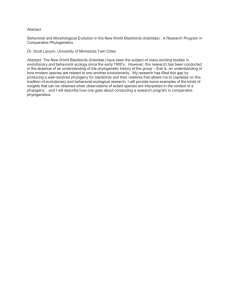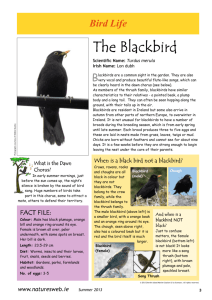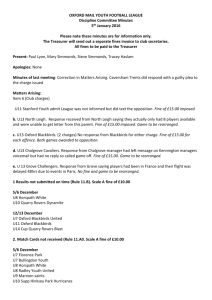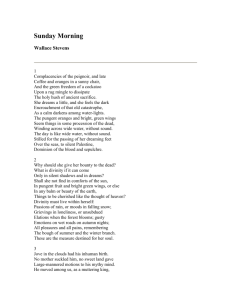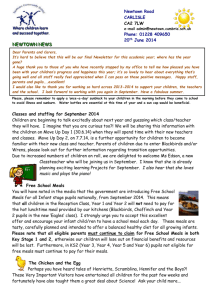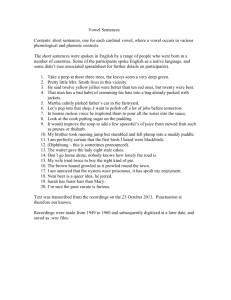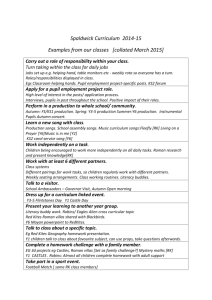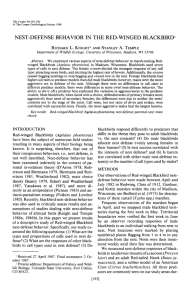blackbird - The Woodland Trust
advertisement
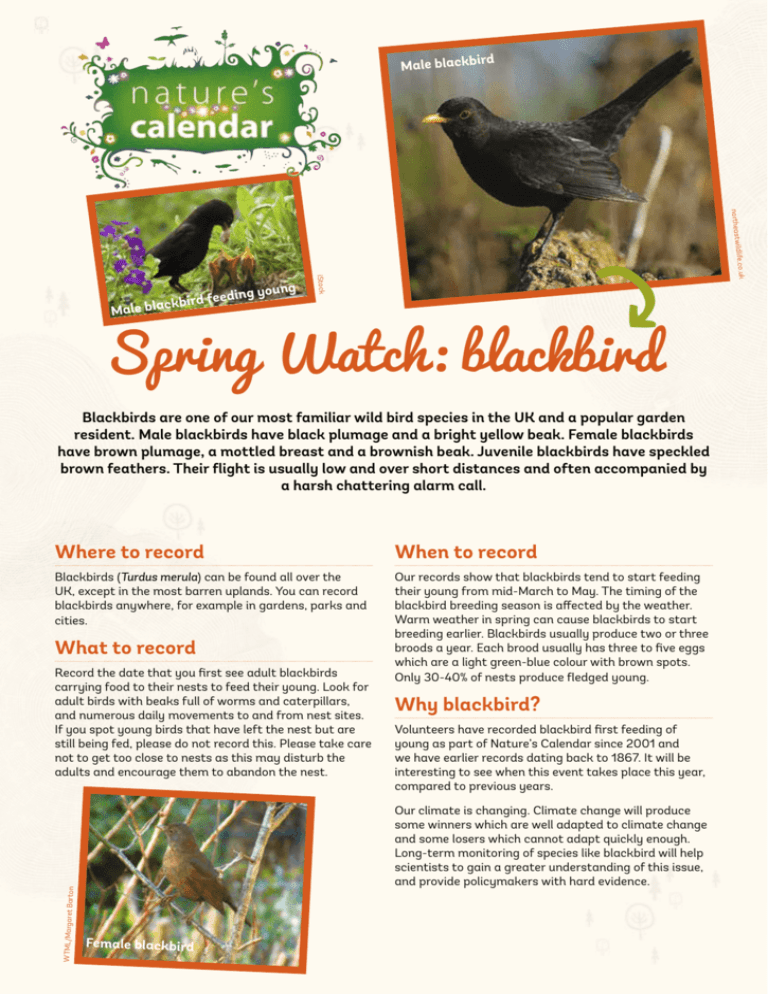
d Male blackbir northeastwi ldlife.co.uk iStock Ma g ing youn ird feed le blackb Spring Watch: blackbird Blackbirds are one of our most familiar wild bird species in the UK and a popular garden resident. Male blackbirds have black plumage and a bright yellow beak. Female blackbirds have brown plumage, a mottled breast and a brownish beak. Juvenile blackbirds have speckled brown feathers. Their flight is usually low and over short distances and often accompanied by a harsh chattering alarm call. Where to record When to record Blackbirds (Turdus merula) can be found all over the UK, except in the most barren uplands. You can record blackbirds anywhere, for example in gardens, parks and cities. Our records show that blackbirds tend to start feeding their young from mid-March to May. The timing of the blackbird breeding season is affected by the weather. Warm weather in spring can cause blackbirds to start breeding earlier. Blackbirds usually produce two or three broods a year. Each brood usually has three to five eggs which are a light green-blue colour with brown spots. Only 30-40% of nests produce fledged young. What to record Record the date that you first see adult blackbirds carrying food to their nests to feed their young. Look for adult birds with beaks full of worms and caterpillars, and numerous daily movements to and from nest sites. If you spot young birds that have left the nest but are still being fed, please do not record this. Please take care not to get too close to nests as this may disturb the adults and encourage them to abandon the nest. Volunteers have recorded blackbird first feeding of young as part of Nature’s Calendar since 2001 and we have earlier records dating back to 1867. It will be interesting to see when this event takes place this year, compared to previous years. Our climate is changing. Climate change will produce some winners which are well adapted to climate change and some losers which cannot adapt quickly enough. Long-term monitoring of species like blackbird will help scientists to gain a greater understanding of this issue, and provide policymakers with hard evidence. on WTML/Margaret Bart Why blackbird? Female blackbird Not to be confused with... Fabulous facts Ring ouzel (Turdus torquatus) Both blackbird and ring ouzel are from the Turdidae (thrush) family. Ring ouzel are smaller and slimmer than blackbirds. They have a distinctive white breast band and are usually found in uplands. They are also known as mountain blackbird. Unlike resident blackbirds, ring ouzel are migrant breeders and arrive in the UK from March. • Blackbirds are residents in the UK, so can be seen at any time of the year. In winter the population of blackbirds in the UK increases, because blackbirds from northern Europe visit for the warmer winter. • They nest in trees and bushes. Nests are made from grass and plant material and lined with mud. • Male blackbirds establish a territory in their first year which they defend against other blackbirds. They tend to keep this territory for life. • Blackbirds have a wide repertoire of songs which are relaxed and flute-like. • Blackbirds feed mainly on insects and earthworms during the summer and on fruit and berries during the winter. They tend to feed on the ground. You can help blackbirds that visit your garden by leaving fallen fruit on the ground. • When chicks leave the nest they are flightless at first and learn to fly after about a week. • Blackbirds are monogamous, and established pairs will stay together for as long as they both survive. • In folklore, a blackbird nesting near the house is seen to be a harbinger of good fortune. • Blackbirds are found throughout the temperate parts of Europe, Asia, North Africa and Australia. • The common name blackbird is first recorded as applied to the species Turdus merula in 1486. • Some blackbirds are white! Albinism causes some blackbirds to grow white feathers. hrush et Mistl northeas twildlife. co.uk north eastw ildlife.c o.uk Mistle thrush (Turdus viscivorus) and song thrush (Turdus philomelos) Female blackbirds may be confused with mistle and song thrushes. To tell them apart, look at their leg colour. Blackbirds have dark reddish-brown legs, thrushes have pale legs. Song thr Ring ouzel northeastw ildlife.co.uk ush How fast does spring move? Theoretically, spring events should occur in the south west of the UK first, and gradually occur further north up the map, as the season progresses. This is due to the differences in climate in the north and south of the UK. What is less clear is how quickly certain signs will make an appearance up the country from south to north. Nature’s Calendar will use your records to help answer the question ‘how fast does spring move?’ Recording tips Once you have seen a sign of spring, please record it! Remember that you need to register on the Nature’s Calendar website first. Registration naturescalendar.org.uk/register Recording naturescalendar.org.uk/survey/login Please choose somewhere you visit regularly (at least weekly) to record your signs of spring. This helps to ensure that you spot when something happens for the first time. 7917 02/16 Nature’s Calendar is part of the Woodland Trust. Registered charity numbers 294344 and SC038885

